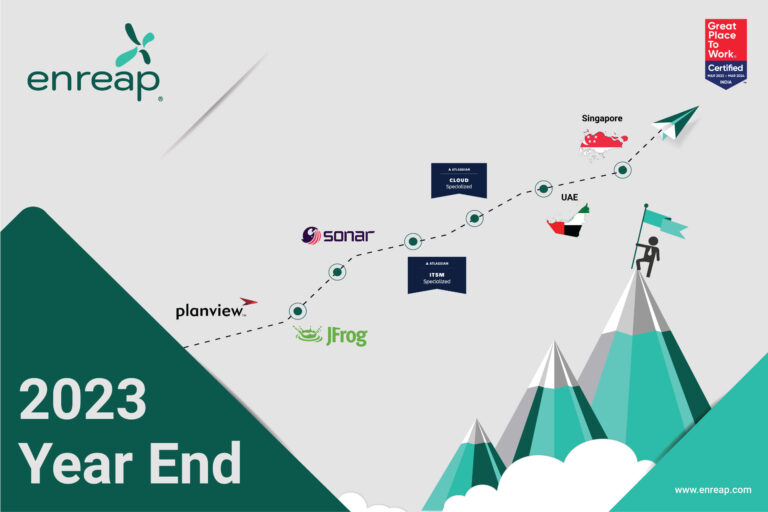In the new year, CIOs are heavily focused on driving operational excellence. While banks and financial institutions have been embracing a range of technological tools to strengthen their operations, when it comes to enabling greater productivity, improving customer service, and accelerating innovation, there are still many gaps.
As GenAI becomes more and more rampant, banks are finally envisioning a future built on the foundation of AI. But the road from vision to practice can get quite bumpy. Read on as we throw light on GenAI benefits, risks, and implementation of best practices in the banking industry.
Business Benefits of GenAI in Banking
For banks and financial services institutions, GenAI is poised to change ways of working. Here are the business benefits of GenAI in banking:
- Front and back office transformation through the extraction of critical information and automation of mundane and error-prone tasks such as KYC, data entry, customer service, etc. Atlassian Intelligence, for instance, uses GenAI to quickly summarize decisions and action items from meeting minutes.
- Business agility via the implementation of large language models that continuously and iteratively capture, share, and improve knowledge to keep pace with the changing market and needs.
- Faster revenue growth through real-time assistance in customer interactions, deal execution, content personalization, demand forecasting, etc.
- Lower costs by automating critical banking operations, minimizing the need for skilled resources, and augmenting customer service operations. Using Atlassian Intelligence, banks can resolve customer requests instantly based on the understanding of knowledge base articles.
- Intelligent marketing by better understanding customer needs and expectations, augmenting product ideation and crafting authentic and tailored campaign content.
GenAI in Banking Application Development: Benefits
While the business benefits of GenAI in banking are many, its impact on the software development lifecycle is similar. Here’s how GenAI can improve banking application development:
- Boost productivity: For development teams, GenAI offers the ability to drive a 10-30% increase in productivity, accelerating both the innovation cycle and time to market. Teams can get much-needed code and troubleshooting assistance, allowing them to achieve more with less.
- Reduce cognitive load: GenAI can also help in reducing cognitive load by automating critical yet time-consuming development tasks. For instance, GenAI models can help with pattern matching or language translation, allowing developers to spend more time on value-adding work.
- Accelerate SDLC: The automation of tasks like coding, testing, and deployment significantly reduces development timelines. This enables faster delivery of software solutions and quicker time-to-market.
- Improve code quality: GenAI models can also help generate high-quality code, reducing the likelihood of errors and rework. In addition, they make software applications easier to maintain and update.
- Improve information retrieval and decision-making: One of the biggest reasons for development inefficiency is finding the right information. GenAI can offer natural language and context-specific support to developers, thus minimizing overhead.
Barriers to GenAI Adoption in Banking
Most banking executives often hear people saying that GenAI will completely transform their business. But does the hype translate into reality? While there are several benefits of GenAI in banking, banking and financial services organizations also must be wary of the barriers:
- Unclear vision: In the race to embrace all things GenAI, banking CXOs often end up implementing a bunch of tools with no clear vision or roadmap in place. Such an approach can result in several consequences, including overshooting budgets, low morale, and poor competitive standing.
- Skills shortage: Banking organizations have a very small in-house IT team that spends most of its time resolving day-to-day issues. These resources aren’t well-versed in the world of advanced technologies like AI. At the same time, most banks see recruiting skilled GenAI experts from the market as an expensive endeavour. According to a study by Ernst and Young, 55% of banking decision-makers say insufficient internal expertise is a challenge in establishing a dedicated GenAI team.
- Legacy systems: The banking industry is well-known for the many legacy systems it relies on. While these systems form the foundation of most successful banking organizations, they are incompatible with advanced technologies, limiting data sharing, and eventually business decision-making.
- Budget constraints: Many banks and financial institutions have limited budgets, which they prefer spending on innovating their products or improving their processes. Spending money on technologies like GenAI often comes way down on their priority list. The same E&Y study states that 54% of banking decision-makers say high costs are a barrier to GenAI implementations.
- Security and compliance concerns: Given that banks deal with massive amounts of sensitive and private data, the security and compliance concerns around GenAI are many. The potential susceptibility of GenAI data to attacks poses a major barrier to GenAI adoption.
- Biased training data: The fact that GenAI models will base decisions on biased training data is also a common concern among banking organizations. This can lead to skewed outcomes, unnecessary prejudice, and low accuracy.
Successfully Embracing GenAI in Banking: Best Practices
GenAI brings forth a new realm of possibilities for banks, allowing them to enhance the customer experience, improve employee productivity, and boost business efficiency. Here are some GenAI best practices to embrace:
- Identify and prioritize GenAI use cases: GenAI can open doors to several efficiencies for the banking sector. However, it is important to identify and prioritize your use cases. With 67% of banks waiting for further developments and testing before prioritizing front-office use cases, back-office automation is a great place to start.
- Be realistic about the challenges: GenAI implementation, no matter how transformative, also brings about some challenges. To navigate the journey, you must be realistic about the many roadblocks that might come your way, including C-suite approval, budget, timelines, skills, governance, etc. Being aware of challenges and crafting possible solutions will help simplify the adoption process.
- Leverage existing foundational investments: To address concerns relating to cost, security, privacy, accuracy, etc., you need to determine how to best leverage the power of existing foundational investments. For example, you can use current data governance and FinOps frameworks to maximize value from GenAI investments and boost financial accountability.
- Adapt to new infrastructure and operating models: In shaping GenAI strategies, banking must also recognize GenAI’s position alongside other disruptive technologies like blockchain, quantum computing, etc. They must adapt to new infrastructure and operating models and build long-term roadmaps to deploy (and scale) GenAI in the right combinations.
- Embrace mature engineering practices: If you want to succeed with your GenAI implementation project, you must embrace mature engineering practices. Approaches and frameworks like DevOps, Agile, and ITSM can help you accelerate GenAI development and delivery while also allowing you to respond quickly to change and boost agility.
- Overcome budget constraints: To optimize the costs associated with GenAI, banks can embrace technologies like the cloud. They can also embrace the power of Managed Services to get access to all the GenAI capabilities they need – without personally having to hire and train resources, implement and manage IT infrastructure, and update and scale GenAI capabilities.
- Strengthen governance: Establishing a sound governance strategy can go a long way in scaling GenAI. It can help minimize the legal or privacy risks of GenAI and safeguard banks’ trade secrets as well as customer data. Governance can also help in limiting inaccuracies and bias while avoiding compliance violations, bias, contract breaches, and copyright infringement.
- Build the right AI partnerships: It takes an army to successfully adopt GenAI. Building the right partnerships with the right AI partners and vendors can help simplify and streamline implementation. Partners like Atlassian and enreap can offer expert guidance on how to design, build, and integrate GenAI responsibly and effectively into banking operations. They can also help predict risks and embrace the implementation of best practices to speed up delivery and enable accuracy.
In Summary
In today’s GenAI-obsessed world, the pressure on banking and financial services organizations to adopt the technology is at its peak. While GenAI offers several transformative benefits, banks need to embark on the adoption journey with caution. Being aware of the various roadblocks and accordingly planning the implementation path is critical to successful implementation.
Banks must also embrace concepts like DevOps, and engage with experts like Atlassian, and enreap to exploit their rich experience and expertise in technology excellence. With the right vision, approach, and partner in tow, banks can unleash the true potential of metamorphic technology like GenAI.
Ready to put your GenAI vision into practice? Contact us today!



